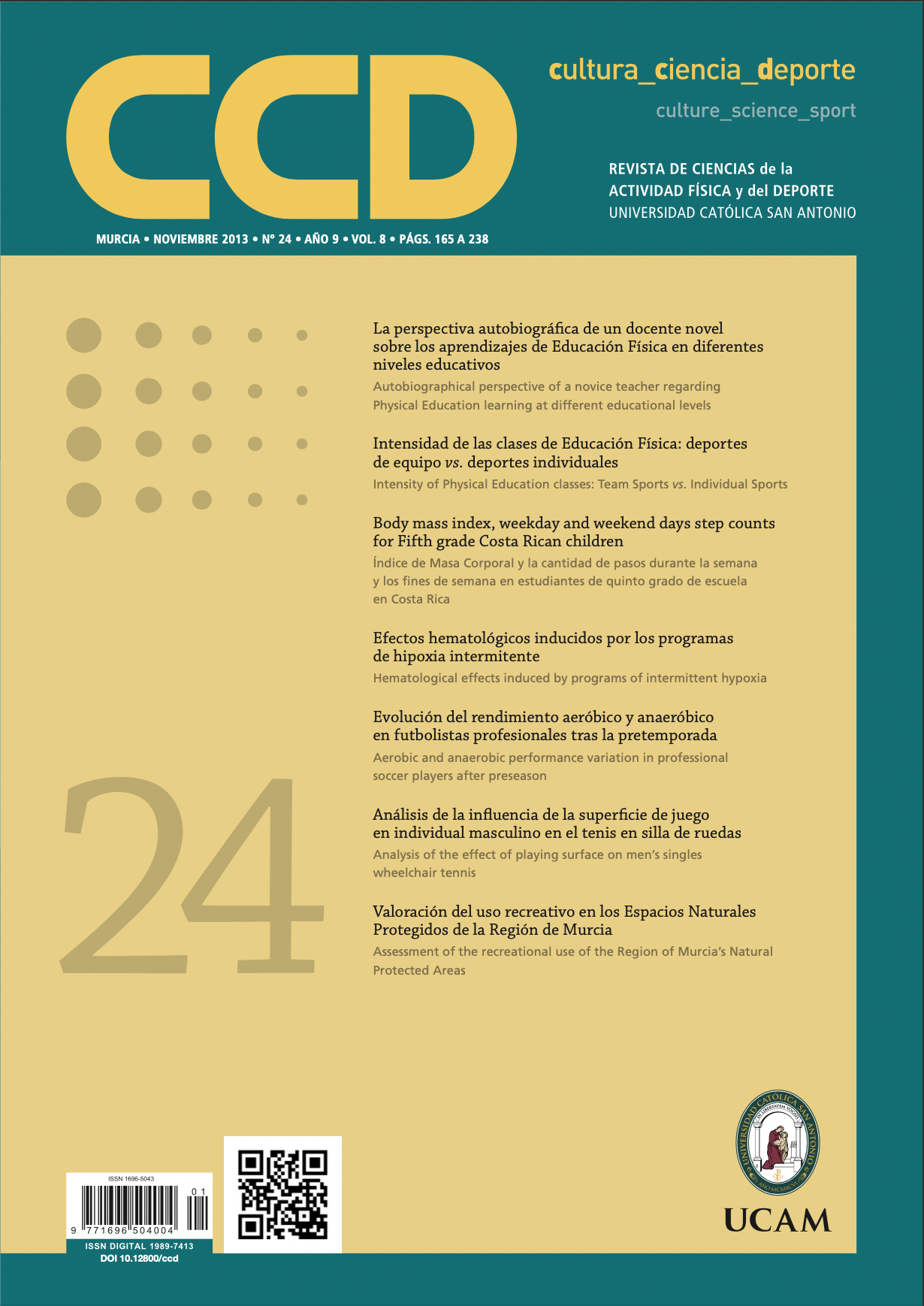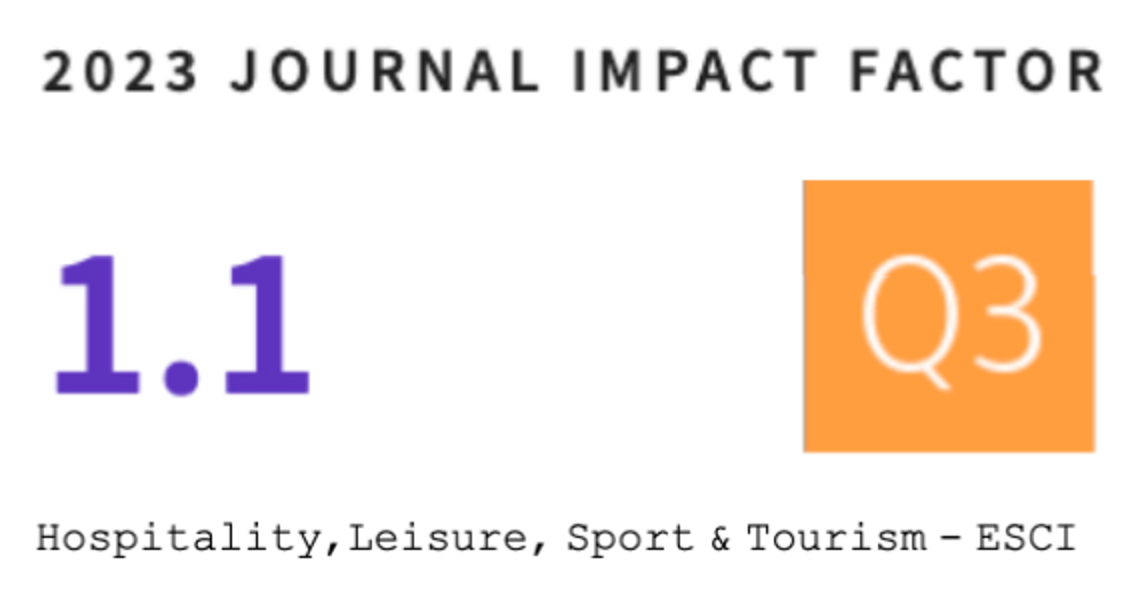Body mass index, weekday and weekend days step counts for Fifth grade Costa Rican children. (Índice de Masa Corporal y la cantidad de pasos durante la semana y los fines de semana en estudiantes de quinto grado de escuela en Costa Rica).
DOI:
https://doi.org/10.12800/ccd.v8i24.357Abstract
http://dx.doi.org/10.12800/ccd.v8i24.357
El propósito de este estudio fue determinar las diferencias en los niveles de actividad física (cantidad de pasos) durante un período de siete días en niños y niñas de quinto grado con peso normal y sobrepeso/obesidad en Costa Rica. Se midieron (n = 188) el peso y la talla de cada participante. Cada niño/a utilizó un podómetro Omron HJ-720ITC durante una semana completa para contabilizar la cantidad de sus pasos. Las personas participantes fueron agrupadas según su IMC (obesidad/ sobrepeso o peso normal). El ANOVA de modelo mixto 2 (sexo) x 2 (IMC Groups) x 2 (semana / fin de semana) reveló que no existe interacción entre las variables. Sin embargo, sí existen diferencias estadísticamente significativas en el efecto intrasujetos de la cantidad de pasos que se toman durante los días entre semana y los fin de semana, F = 19.421, p <.001. Además, se encontraron diferencias estadísticamente significativas en el efecto inter-sujetos entre la cantidad de pasos y los grupos de IMC, F = 4.09, p = 0.044; y la cantidad de pasos y el sexo F = 6.80, p = 0.010. Se concluye que los niños/as en esta investigación realizan mayor cantidad de pasos durante la semana que durante los fines de semana, así como que la cantidad de pasos en los niños/as del grupo Obesidad/ Sobrepeso fueron más bajos que en los niños/as del grupo Peso Normal. Los niños realizan mayor cantidad de pasos que las niñas durante todos los días de la semana. De acuerdo a los resultados obtenidos es importante el desarrollo de intervenciones que promuevan actividad física durante los fines de semana, particularmente en niñas y entre la población infantil con alto IMC.
Palabras clave: Niños/as, actividad física, índice de masa corporal, podómetros, salud.
===
Abstract
The purpose of this study was to determine the differences in physical activity levels (pedometer step count) over a seven day period between normal weight and overweight/obese fifth grade Costa Rican boys and girls. Children’s (n = 188) weight and height were measured. Each child wore an Omron HJ-720 ITC pedometer for one week to assess step count. Participants were placed into one of two groups (Obese/Overweight or Normal weight) based on BMI. A 2 (Sex) x 2 (BMI Groups) x 2 (Week/Weekend) mixed model ANOVA revealed no interactions among variables. However, there were statistically significant differences for the within-subjects effect, with average step counts for weekdays and weekend days, F = 19.421, p < .001, and statistically significant between-subjects effects for step counts and BMI groups, F = 4.09, p = .044, and Sex, F = 6.80, p = .010. All children engaged in more daily steps during the weekdays than the weekend days. Daily step counts for children in the Obese/Overweight BMI group were lower than children in the Normal BMI group. Boys engaged in more daily steps than girls all days of the week. Interventions to provide weekend physical activity should be promoted based on these findings, particularly for girls and children with high BMIs.
Key words: Children, physical activity, body mass index, pedometer, health.
Downloads
How to Cite
Issue
Section
License
The authors who publish in this journal agree with the following terms:
- The authors retain the copyright and guarantee the journal the right to be the first publication of the work as well as licensed under a Creative Commons Attribution License that allows others to share the work with recognition of the authorship of the work and the initial publication in this journal.














